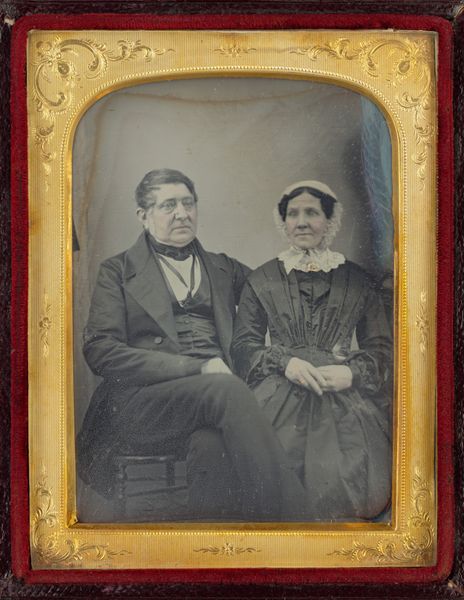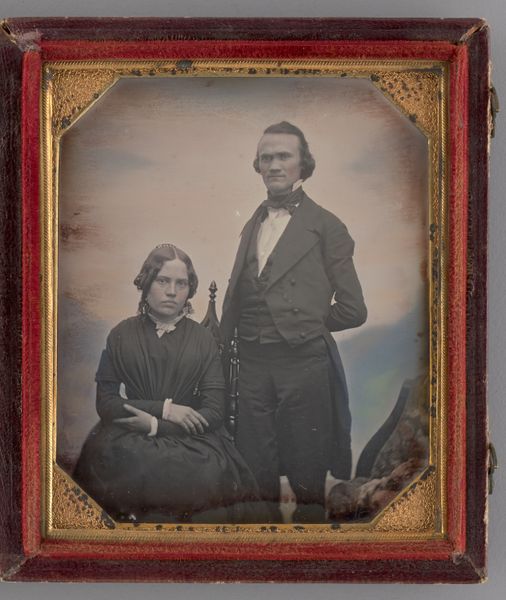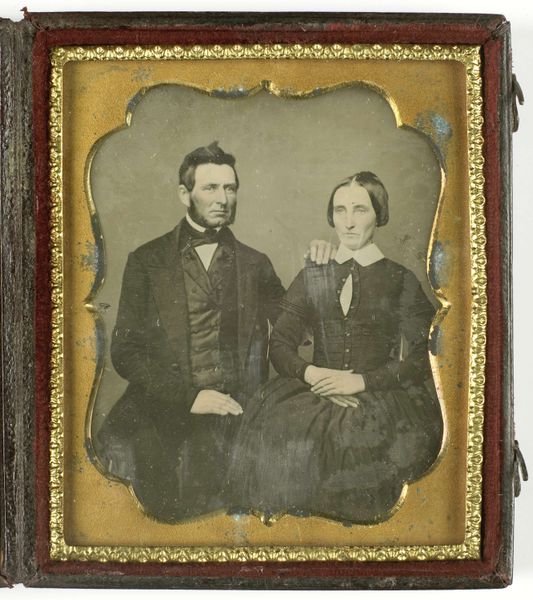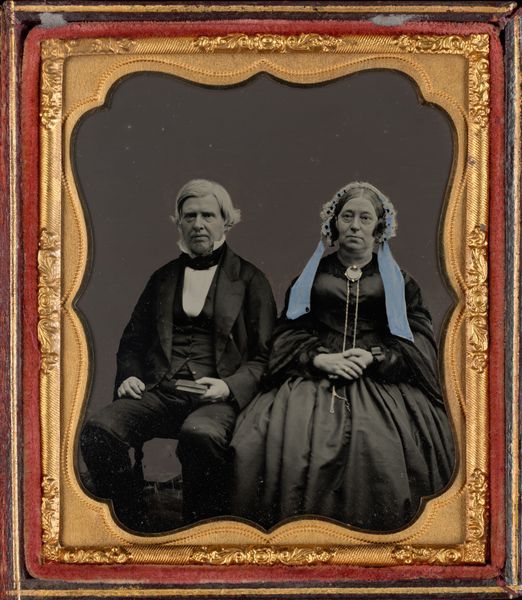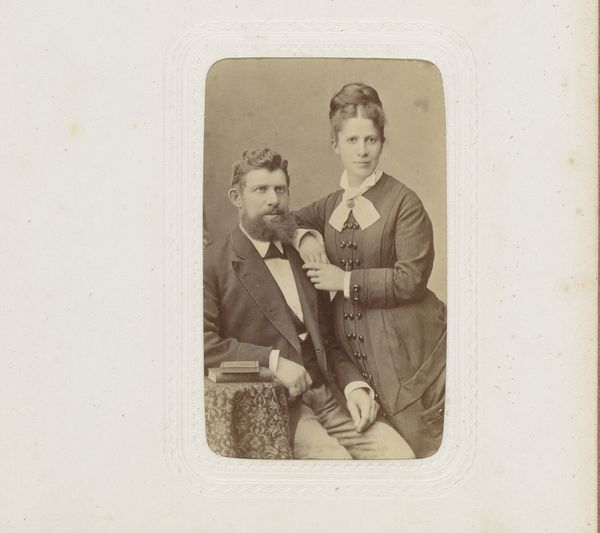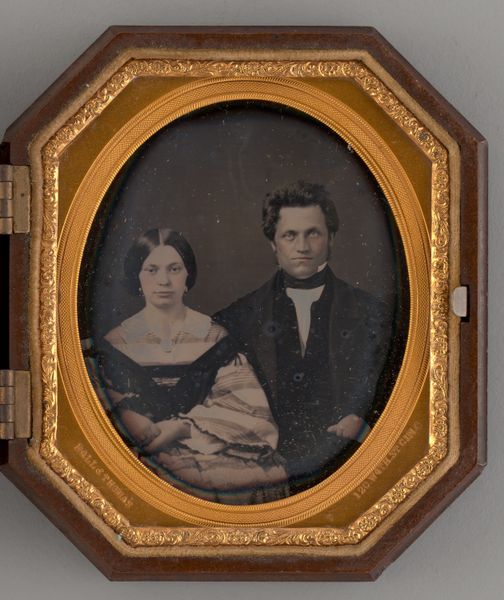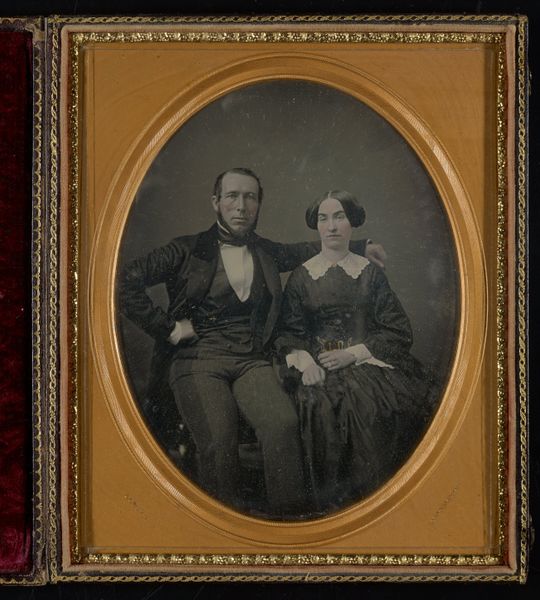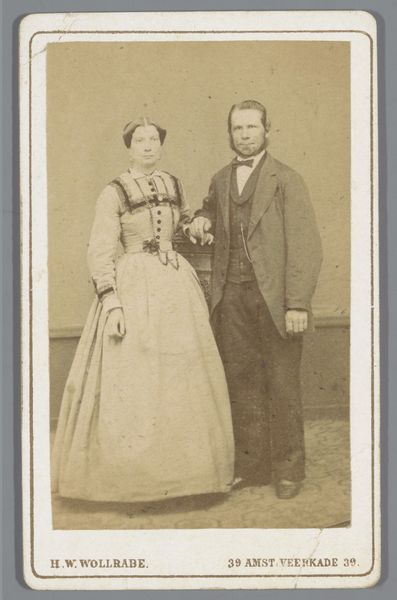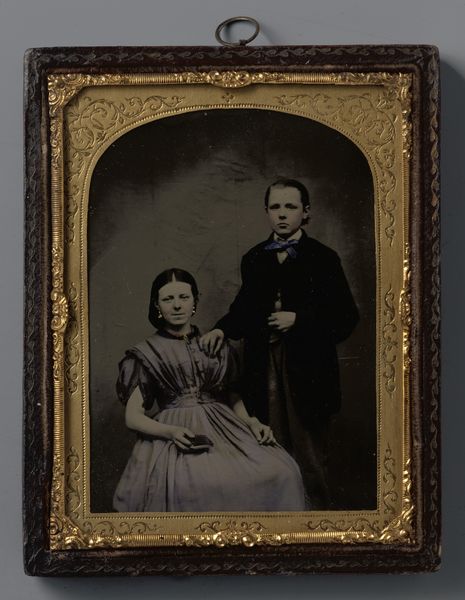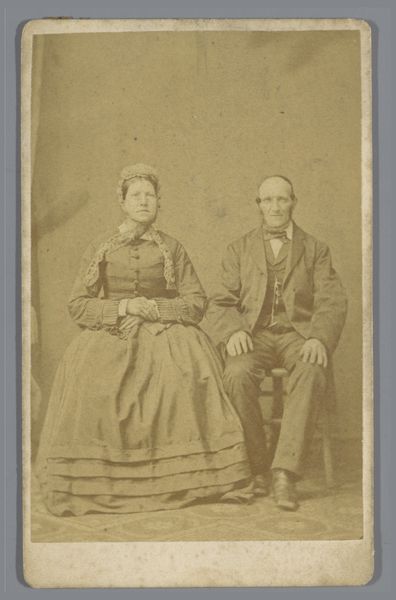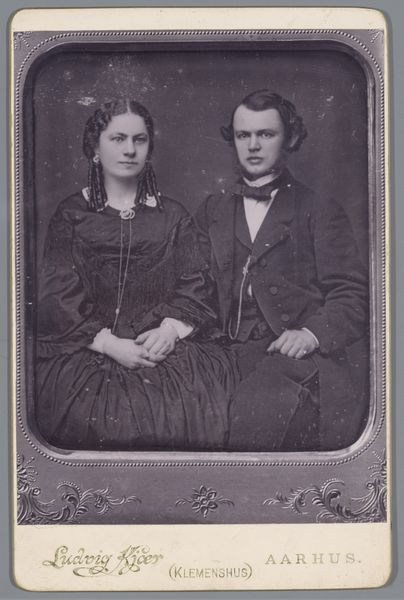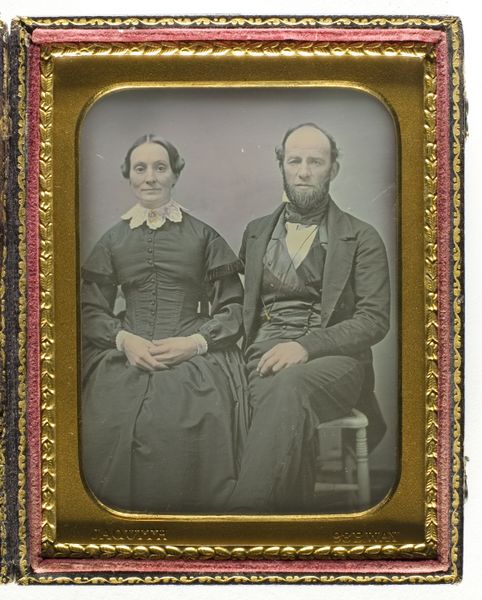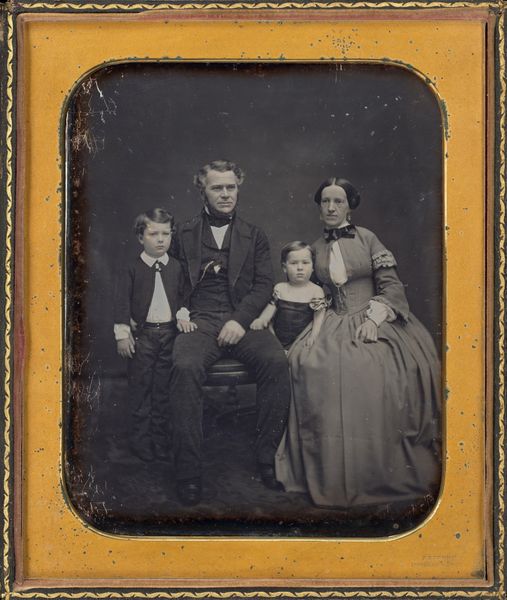
daguerreotype, photography
#
portrait
#
16_19th-century
#
daguerreotype
#
photography
Dimensions: 8.3 × 7 × 0.7 cm
Copyright: Public Domain
Curator: Here we have an untitled daguerreotype dating roughly between 1839 and 1860. The artists remain unknown. Editor: It’s quite a severe composition, isn’t it? The subjects, a man and woman, appear very formal, almost stoic. And that gilded frame only amplifies the overall austerity. Curator: These early photographic portraits were often intended to project respectability and status, very similar to painted portraits from the period. Think about the social conventions that dictated posture, dress, even facial expressions during this era. Editor: True, but look at the light. It is distributed unevenly and casts a harsh glow and profound shadow. It calls to mind similar visual schemes deployed in tenebrist painting and chiaroscuro drawing. This approach has an emotional impact; a darkness and formality permeates the composition. Curator: It’s also important to consider the daguerreotype process itself. It was painstaking, required long exposure times. Maintaining composure would have been paramount for achieving clarity. This new form of media had strong potential for widespread consumption and the public performance of identity. Editor: The texture, though. It’s difficult to truly appreciate through reproductions, but in person you see the metallic sheen of the plate, the subtle imperfections and marks that feel so incredibly tangible. The tonal range is very rich and deep too. It would make anyone look proper! Curator: Indeed! These photographs offered, for the first time, wider access to portraiture for a burgeoning middle class and a greater democratization of likeness. Photography fundamentally altered visual culture. Editor: And even within these constraints, there’s an undeniable intimacy captured, the quiet connection between the subjects in this double portrait. Despite the stoicism there's a humaneness revealed. Curator: Absolutely. Early photographs often are moving precisely because of that tension between the formal conventions and the unscripted humanness captured. I see both the social demands and also quiet acts of personal and human resilience on display in this striking artwork. Editor: I agree. When you truly look closely at all the formal elements on view and in context with its historical circumstance, a great amount about what it means to be seen is revealed by its surface, its style, its emotional intensity.
Comments
No comments
Be the first to comment and join the conversation on the ultimate creative platform.
